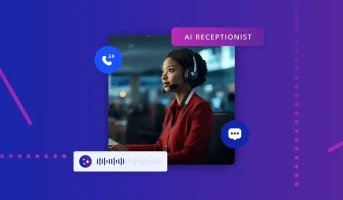By Marlene Cosain
In our perfect world, employees would meet all of our crazy standards. What would it be like if every employee was punctual? Furthermore, what if they accomplished their day-to-day requirements flawlessly? Even better, wouldn’t it be ideal if everyone got along and gossip did not spread through the office like the cancer it is. If this perfect world was real, there would be no need for a disciplinary program. Unfortunately once we set our feet on the ground, back from our ideal world, we realize the need for progressive discipline. There are many advantages to this concept because there is documentation of how your company reacted to a workforce issue step-by-step.
What is Progressive Discipline?
According to HR Morning the concept is simple, “It’s a structured approach to dealing with workforce problems ranging from poor performance to unacceptable behavior.” In other words, if you have repeatedly given your employee the opportunities to correct their problems and they have failed, you implement measures to correct the issue.
Three Goals of Progressive Discipline
The first goal of progressive discipline is to ensure that your employees are complying with your company standards. Secondly, the concept aims at encouraging employees to succeed in the workplace through ethics and performance. For this reason, each employee must know what is expected from them to succeed. Lastly, progressive discipline pushes for evidence of the process your company has gone through to solve the problem and enforce your rules. For example, creating a point system, speaking with them repeatedly, and then termination would be the last resort.
Progressive Structure
Typically, the first step is counseling or coaching. This step looks something like this: Your employee makes a mistake; then, your manager brings the problem to light. He/she basically goes over the issue with your employee and advises your employee on how to correct the problem.
Step Two: This step is revisiting the failed attempt of step one. Basically, you are sitting down with the employee again and reviewing the topic with the employee. Here you determine why step one failed and how your team can help your employee improve.
Step Three: This is where it gets formal. After the counseling approach did not work, proceed to writing a warning. When doing so, be sure to include the employee’s performance, what was expected of them and the consequences that follow since the issue was not corrected. According to what you feel is best for your company’s interest, you can repeat step three several times. For example, once the supervisor gives your employee three warnings, then it is time for a designated person in HR, or yourself, to speak with the employee directly.
Step Four: This is the last step in which you terminate your employee after repeatedly asking them to fix different issues. Before ending your contract with your employee make sure that a supervisor is notified in HR. It is important that someone else is aware of the issue. Here are a three points to consider before firing someone according to Business Management Daily:
- Does the employee claim a contractual relationship exists, and if so, does that assertion have merit?
- Has the employee recently filed a workers’ compensation claim, complained to a government agency about alleged workplace violations or taken any other actions that might make a discharge look like unlawful retaliation on your part?
- Is there an issue relating to good faith and fair dealing, especially if the termination involves a long-term employee?
Helping your employees succeed is fundamental; therefore, you want to make sure that they are in an environment in which they are given opportunities to better themselves.




